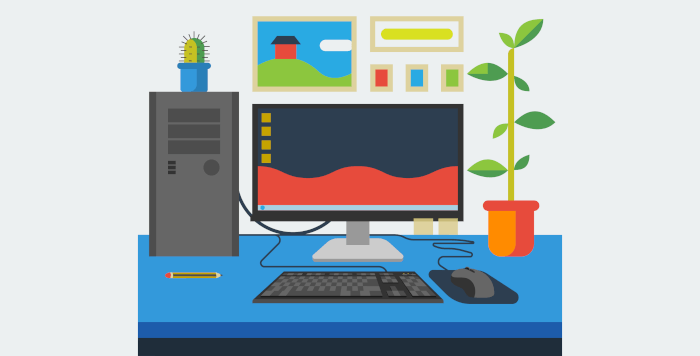Last Updated on May 27, 2022
Development
Pantheon began as an alternative interface that users could install for Ubuntu. Pantheon is written in Vala using the GTK+3 toolkit. It builds on GNOME technologies, but uses components that were written from scratch.
TDE started as a fork of KDE version 3.5 in 2010. Since then there have been major releases every 6 or 12 months although given the project team is small, development is very slow. The latest release R14.0.5 came out in August 2018 which was mostly a bugfix.
LXDE saw its first release in 2006 with the release of PCManFM (now PCMan), a file manager, and the first LXDE module.
Closing Thoughts
If you’re looking for a lightweight desktop and find Enlightenment too quirky, LXDE may be a good solution. It doesn’t just run on ancient hardware so don’t discard it.
Using Trinity feels like a timewarp experience. It’s too clunky for our liking and isn’t even that lightweight.
There’s a lot to recommend in Pantheon, but unless you are running elementary OS, we still cannot recommend it over GNOME or KDE.
Desktop environments can have huge implications for your productivity. For a minority, these environments can actually get in the way of getting things done. For example, if you’re using a really low-spec hardware, a desktop environment may be overkill, and all you really need to be productive is a good window manager. There are a few Linux distributions such as Puppy Linux that are happy to offer a window manager without a DE. Or you could try running with only a window manager like awesome or bspwm.
Back to the Beginning: Page 1 – Intro & Features
Pages in this survey:
Page 1 – Features
Page 2 – User Experience
Page 3 – System Resources
Page 4 – Extensibility
Page 5 – Documentation & Support
Page 6 – Development / Closing Thoughts
Learn more about the features offered by each desktop environment. We’ve compiled a dedicated page for each desktop environment explaining, in detail, the features each offers together with screenshots.
| Desktop Environments | |
|---|---|
| Pantheon | Showcasing the elementary OS |
| LXDE | Desktop environment with low resource requirement |
| Trinity Desktop | Qt3-based KDE 3.x form traditional computer desktop that is responsive |

I consider myself to be a power-user and use openSuse Leap 42.3 on my main workstation (HP xw8400) and prefer KDE Plasma for it’s configurability.
For my various laptop/netbook devices I settled on Lubuntu a couple of years ago because LXDE seemed to be lighter and faster than Xubuntu’s XFCE. Lubuntu 18.04 runs pretty much the same on my Acer One 110 Netbook, a Dell Inspiron 1300 and even a 12 year old Apple 13″ MacBook. That means I only need to keep up with 2 desktop environments. The one thing it lacks is a proper 2 panel file manager. I use Konqueror on openSuse which is IMHO the very best file manager around.
I agree with your view of LXDE, and would definitely recommend it, especially for older equipment and for Linux newbies.
As to TDE I only have one comment. It was designed for those who couldn’t drag themselves away from KDE 3.5! So obviously it has a more old fashioned look and feel. I did try it for a while as I needed Quanta+ for webdesign, but that now works fine on KDE 4.x so I left it behind.
Thanks for these interesting and informative reviews.
though LXDE is pretty much dead, I still enjoy the days when I ran LXLE as my main distro…
This comment was removed because it broke the rules. We don’t allow external links in comments. Explain.
To suggest an open source program, please complete this form.